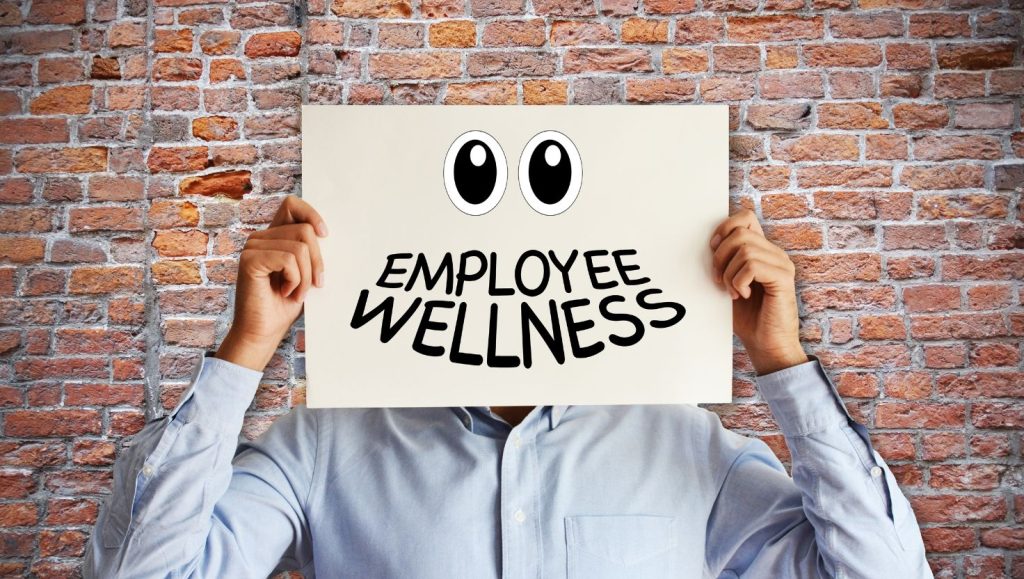Physical Well-being in the Workplace: 6 Proven Strategies for Holistic Health

Did you know that physical well-being in the workplace directly impacts productivity, job satisfaction, and even employee retention?
Many employees spend a significant portion of their day seated, which can lead to physical health risks such as back pain, stress, and fatigue.
Fortunately, there are many ways to support physical and mental health at work, creating a healthier work environment.
In this guide, we’ll explore simple strategies to help you promote physical well-being and improve employee health.
Key Takeaways
- Regular movement boosts physical well-being in the workplace and reduces health risks.
- Employee wellness programs and ergonomic adjustments support long-term health.
- Workplace culture plays a huge role in fostering physical and mental health.
- Promoting work-life balance improves employee well-being and engagement.
- Small changes, like offering healthy snacks and fitness opportunities, can make a big impact on employee wellness.
Encourage Regular Physical Activity

It’s no secret that physical activity is essential for maintaining overall health, yet many employees struggle to stay active during the workday. Sitting for long periods can lead to physical health risks like obesity, muscle stiffness, and poor posture.
- Standing desks: Offering adjustable desks can encourage employees to switch between sitting and standing throughout the day, reducing strain on the back and neck.
- Fitness classes: To help workers stay active during breaks, organize on-site fitness classes or provide access to a fitness facility.
- Walking meetings: Consider holding walking meetings to integrate physical activity into the daily routine while discussing work tasks.
Encouraging employees to move regularly can lead to physically healthy employees who are more energized and productive.
Prioritize Ergonomic Support in the Work Environment

The physical setup of a workplace plays a significant role in promoting employee physical health. Ergonomic support ensures employees have the tools to avoid long-term injuries like back pain or wrist strain.
- Ergonomic chairs: Provide chairs that support the lower back, allowing employees to maintain good posture throughout the day.
- Monitor height: Position computer monitors at eye level to prevent neck and eye strain.
- Keyboard and mouse placement: To avoid repetitive strain injuries, ensure employees’ wrists are straight and supported while typing.
Investing in ergonomic adjustments can significantly reduce healthcare costs associated with workplace injuries while supporting employee wellness.
Offer Healthy Food Choices and Snacks

It’s easy for employees to reach for unhealthy snacks during a busy day, but providing healthy food choices can make a huge difference in their overall health. Promoting nutrition at work can lead to better focus and energy.
- Healthy snacks: Stock breakfast with fruits, nuts, and whole grains. These choices improve energy levels and support physical well-being.
- Lunch initiatives: Encourage employees to bring balanced meals or provide access to healthy cafeteria options. This can help support long-term employee wellness and reduce health risks.
Promoting a healthy workplace through nutrition ensures workers feel their best throughout the day.
Implement Employee Wellness Programs

Comprehensive employee wellness programs are key to supporting mental and physical health. These initiatives improve health outcomes and can also reduce absenteeism and sick leave.
- Health screenings: Offer regular health checkups or screenings for issues like blood pressure, cholesterol, and BMI. Early detection of potential problems helps employees take charge of their health.
- Stress management workshops: To support mental wellness in the workplace, organize workshops that focus on techniques like mindfulness or meditation.
- Counseling services: Provide access to employee assistance programs and counseling services to help workers cope with mental health challenges.
Offering resources that support physical and mental well-being can foster a more productive workforce and improve employee retention.
Promote Work-Life Balance

A healthy balance between personal and professional life is crucial for maintaining physical and mental health. Employees who feel overworked or stressed are more likely to experience burnout, reducing productivity.
- Flexible work schedules: Offering flexible hours or remote work options can help employees more effectively manage their personal lives and job responsibilities.
- Encourage breaks: Ensure employees take regular breaks to recharge and reduce stress. Even a short walk or a power nap can boost energy and focus.
- Leadership support: Managers should lead by example, promoting a work-life balance and showing that one’s health is a priority.
A company that values employee well-being and supports work-life balance will see higher employee engagement and satisfaction levels.
Create a Supportive Workplace Culture

Your workplace culture plays a significant role in encouraging employees to adopt healthy habits. A healthy work environment fosters collaboration, physical activity, and mental resilience.
- Wellness initiatives: Launch workplace-wide wellness challenges or incentives that promote regular exercise or healthy lifestyles.
- Physical wellness activities: Organize team-building activities incorporating physical exercise, such as charity runs, group yoga sessions, or fitness challenges.
- Sustainability efforts: Encourage zero-waste office organization tips to create an eco-friendly, clutter-free workspace that aligns with employee wellness goals.Indoor air quality: Use nature-inspired design strategies to improve air ventilation and incorporate how indoor plants purify air to foster a healthier work atmosphere.
- Leadership skills: Train managers on fostering a positive, health-conscious environment that values employee well-being.
Summary
Physical well-being in the workplace is essential for creating a thriving, healthy work environment. By encouraging regular physical activity, offering ergonomic support, and promoting healthy food choices, you can improve your employees’ health and energy levels.
Investing in employee wellness programs and fostering a culture of work-life balance ensures workers are not only physically healthy but also mentally strong. These initiatives will lead to reduced absenteeism, increased job satisfaction, and a more productive workforce.
Frequently Asked Questions
What Are Some Ways to Encourage Physical Activity at Work?
Encourage regular movement with standing desks, walking meetings, and on-site fitness classes. Providing access to fitness facilities and organizing wellness initiatives also supports physical wellness.
How Can We Improve Employee Well-being?
Implement employee wellness programs that offer resources for both mental and physical health. Providing mental health resources, promoting work-life balance, and offering healthy snacks contribute to a healthier workforce.
What Are the Benefits of a Healthy Work Environment?
A healthy work environment reduces healthcare costs, lowers absenteeism, and improves employee retention. It also fosters greater job satisfaction and employee engagement, leading to a more productive workforce.
Why Is Ergonomic Support Important for Employee Health?
Ergonomic support prevents long-term physical strain, like back and neck pain, and improves comfort at work. This investment reduces workplace injuries and enhances overall employee physical health.
How Do Wellness Programs Affect Productivity?
Wellness programs improve physical and mental health, leading to fewer sick days, better focus, and increased energy. A healthy workforce is a more productive and engaged workforce.






5 Comments